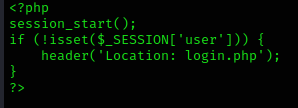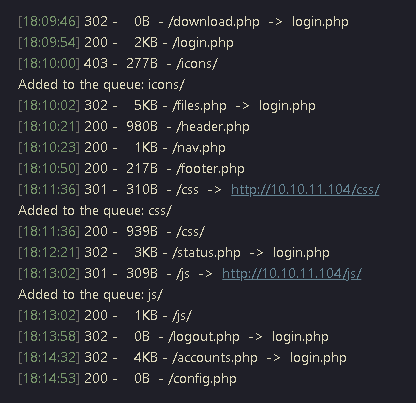The web application sends a redirect to another location, but instead of exiting, it executes additional code. This weakness could affect the control flow of the application and allow execution of untrusted code.

This code redirects unauthorized users, but continues to execute code after calling http_redirect(). This means even unauthorized users may be able to access the contents of the page or perform a DoS attack on the server being queried. Also, note that this code is vulnerable to an IP address spoofing attack (CWE-212).
The PHP code checks if the user IP is allowed in $ipAllowList or not. If not, it will redirect them to the login page located at /login. But there’s no one telling the program to stop executing all the code after the redirect. So, all the code that should run only when a user has a valid session will also get executed. If we use a proxy tool such as BurpSuite or ZAP, we can modify the response of 302 Found redirect into a 200 OK response.
Exploitation
Consider a web application that has login functionality. Users who have an account can access content/features in this web application only by logging in. Unauthenticated users are redirected to the login page for them to first log in and get an authenticated session.
- Send to repeater.
- View response.

1. I ran a directory discovery using dirsearch and noticed a lot of redirects

2. I decided to access /accounts.php, and indeed got redirected to login.php

3. I decided to capture the request/response using a proxy (BurpSuite), send the request to Repeater and resend it.
Request

Response

Note: here we can see the HTTP code 302 redirection, in location we can see the redirection to login.php
4. In the same response we can see the code of accounts.php, instead of login.php

5. In order to bypass this in the browser, go to (Proxy – Proxy Settings – Match and replace rules), send traffic through the proxy
- Type: Response header
- Match: 30[12] Found #match either 301 or 302
- Replace: 200 OK
- Comment: VK9 redirection bypass
- Check “Regex match”

6. Now that the redirection rule has been set to bypass 301-302 HTTP code, visit the page we’re trying to access /accounts.php

Remedy
Proper termination should be performed after redirects. In a function a return should be performed. In other instances functions such as die() should be performed. This will tell the application to terminate regardless of if the page is redirected or not.

Sources
https://cwe.mitre.org/data/definitions/698.html
https://support.detectify.com/support/solutions/articles/48001048953-execution-after-redirect-ear-
https://martellosecurity.com/kb/mitre/cwe/698/
https://fireshellsecurity.team/execution-after-redirect/